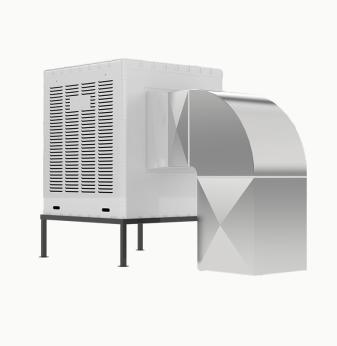Ambient Computing: How Invisible Technologies Are Reshaping Our Environments

As digital experiences become more immersive and intuitive, a new paradigm is quietly taking hold: ambient computing. This approach integrates sensors, devices, data, and AI seamlessly into our surroundings, enabling technology to act proactively and contextually without the need for direct interaction.
At Promwad, we explore how this shift is unlocking new possibilities for smart homes, industrial automation, and beyond.
What Is Ambient Computing?
Ambient computing refers to a digital environment in which computing resources are embedded everywhere. These systems sense, anticipate, and respond to user needs based on real-time context and behavioral patterns. It encompasses technologies like edge computing, IoT, machine learning, natural language processing, and smart sensors.
Unlike conventional human-computer interactions that require explicit commands or interfaces, ambient systems work invisibly in the background, delivering information or actions when needed. Think of thermostats adjusting temperatures automatically or lights dimming as you enter a room.
Core Technologies Behind Ambient Computing
| Technology | Function |
| IoT Sensors | Gather environmental and behavioral data |
| Edge Computing | Processes data close to the source to reduce latency |
| AI & ML | Interprets data to drive automation and context-aware responses |
| Natural Language Processing | Enables voice interaction and understanding |
| Computer Vision | Detects and interprets physical surroundings |
Applications Across Sectors
Smart Homes
- Lights, HVAC, and appliances adapt to resident preferences.
- Devices learn schedules and habits to automate tasks.
- Security systems use facial recognition and voice control.
- According to IDC, 60% of households in developed nations will feature some form of ambient tech by 2026.
Smart Cities
- Adaptive street lighting based on pedestrian activity.
- Traffic signals change dynamically to reduce congestion.
- Public transport updates tailored to commuter preferences.
- Capgemini reports that smart lighting systems alone can cut municipal energy use by 40%.
Healthcare
- Patient rooms monitor vitals and adjust settings automatically.
- Medication dispensers remind and alert based on adherence patterns.
- Wearables detect anomalies and alert caregivers proactively.
- According to Deloitte, ambient medical systems can reduce hospital readmission rates by up to 25%.

Industry 4.0
- Factory equipment predicts maintenance needs before failure.
- Inventory systems reorder supplies autonomously based on usage data.
- Worker safety monitored via biometric wearables and geofencing.
- GE Digital estimates that predictive ambient systems can increase industrial productivity by 20–30%.
Retail and Hospitality
- Stores adjust layouts and promotions based on foot traffic analysis.
- Hotels automate lighting, climate, and entertainment for each guest.
- Personalized experiences through voice assistants and geolocation.
- McKinsey found that retail environments leveraging ambient data see up to 15% higher conversion rates.
Recent Trends and Forecasts
According to Statista, the global smart home market alone is expected to surpass $231 billion by 2027. Gartner predicts that by 2025, over 50% of interactions between users and devices will occur in ambient environments.
The rise of smart assistants like Amazon Alexa and Google Assistant indicates growing adoption, with over 300 million smart speakers now in use worldwide.
Ambient computing is also converging with technologies such as digital twins and the metaverse, enabling cross-dimensional interaction between physical and digital spaces.
Challenges in Ambient Computing
| Challenge | Implication |
| Privacy | Collecting behavioral data raises ethical concerns |
| Security | More endpoints create greater risk of attack |
| Interoperability | Devices from different vendors must work seamlessly |
| Data Management | Requires powerful real-time analytics and storage |
Expert Commentary
"Ambient computing is not just a feature; it's the next evolution of digital experience," says Satya Nadella, CEO of Microsoft. "The technology fades into the background and becomes part of our environment."
According to Deloitte's 2024 Tech Trends report, ambient intelligence will be a defining capability for businesses looking to create differentiated user experiences in the next five years.
"We're moving into an era where the best interface is no interface," notes Amber Case, researcher and author of "Calm Technology." "Ambient systems must be designed to require the least attention, integrating so well that users forget they're there."
Promwad's Expertise in Ambient Systems
At Promwad, we help businesses design embedded systems and edge-AI platforms that power ambient computing experiences:
- Custom electronics and embedded software for smart devices
- Integration with NLP and vision-based AI modules
- Prototyping and testing for real-time contextual responsiveness
- Data pipelines for low-latency and secure decision-making
We work with partners in consumer tech, industrial automation, and digital health to create ambient-aware systems that are user-centric and future-proof.
Conclusion
Ambient computing is set to redefine how we interact with the digital world. By embedding intelligence into the environment, it offers intuitive, responsive experiences across homes, workplaces, and cities. With real-time context-awareness and proactive automation, ambient systems are no longer just smart—they’re transformative. Promwad continues to drive innovation in this space, building technology that responds to you, not the other way around.








